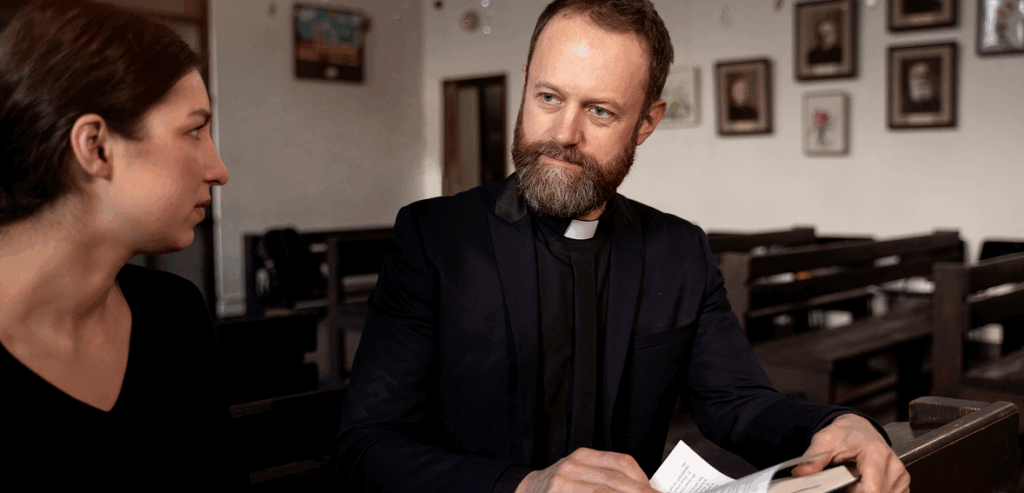
By Lucy Brookes July 28, 2025
Churches play a vital role in their communities. They offer spiritual guidance, emotional support, and practical help to people from all walks of life. From feeding the hungry to hosting youth programs and community events, churches provide essential services that require resources to operate. Most of those resources come from the faithful generosity of their congregations.
Managing these donations with care and clarity is not just a financial duty. It’s a spiritual responsibility. Donors give to the church because they trust its mission and leadership. They believe their contributions will be used to serve others and support the church’s ministry. That trust must be honored through transparent and accountable financial practices.
When churches manage donations with openness, they build stronger relationships with their congregations. People feel more confident giving when they know how their money is being used. This not only supports the church financially but also fosters a deeper sense of community and shared purpose.
The Spiritual Responsibility of Stewardship
In many faith traditions, stewardship is more than a financial concept. It is a deeply rooted belief that everything we have is a gift from God, and we are called to use those gifts wisely. This includes managing money, resources, and time in ways that honor that sacred trust.
For church leaders, stewardship includes the responsibility of handling donations faithfully. Every dollar received is a sign of someone’s trust and commitment. Members tithe and give offerings not out of obligation but out of devotion and belief in the church’s mission.
Because of this, financial transparency is not just a best practice. It’s a reflection of spiritual integrity. When churches are open about how money is collected, spent, and reported, they show that they are serious about their mission and about honoring the trust of their members.
Transparency also helps prevent misunderstandings and protects both the church and its leadership from accusations of mismanagement. A clear and honest approach to finances builds a foundation of trust that strengthens the entire faith community.
Why Financial Transparency Matters in Churches

Transparency is often associated with nonprofit governance or corporate accountability. But in a church setting, it plays an even more personal role. Congregants give from their hearts. They want to know that their gifts are being used wisely and that their church is acting with integrity.
Financial transparency in churches does not mean broadcasting every detail of the budget to the public. It means being clear, consistent, and open about financial practices. This includes regular updates to the congregation, clear records of donations, and easy access to financial statements for those who want to see them.
When churches operate transparently, it reduces suspicion and gossip. People are less likely to speculate about how money is spent when they can see it for themselves. It also encourages giving. Studies show that people are more likely to give to organizations they trust and where they see their money making a difference.
Lack of transparency, on the other hand, can lead to conflict, reduced giving, and even people leaving the church. When congregants don’t feel informed or respected, it weakens the connection between them and the ministry.
Setting Up Reliable Donation Tracking Systems
To manage donations transparently, churches need reliable systems for tracking and recording giving. This is not just about bookkeeping—it’s about creating an accurate record that reflects the church’s accountability to its members.
Start by establishing a system that logs every donation, whether it comes in through the offering plate, online giving, mailed checks, or fundraising events. Each donation should include the date, amount, donor name (if known), and purpose, such as tithe, missions, or building fund.
Many churches use spreadsheets in the early stages, but as giving grows, dedicated donation management software becomes more useful. These systems can automate receipt generation, track pledges, generate year-end giving statements, and create reports for church leaders and boards.
When selecting a system, look for tools that are easy to use, offer secure data storage, and support multiple types of giving. Some popular options for churches include Tithe.ly, Breeze, ChurchTrac, and Planning Center Giving.
Having a reliable system reduces errors, ensures every donation is recorded, and makes it easier to respond to questions or concerns. It also helps churches stay organized and prepared for any future financial reviews or audits.
Issuing Timely and Accurate Giving Statements

Part of being transparent with donations is making sure that every giver receives proper acknowledgment. Donors should receive a giving statement at the end of each year showing their contributions, especially if they plan to use it for tax purposes.
A well-prepared giving statement includes the donor’s name, the total amount given during the year, the date and type of each gift, and a brief thank-you note. It should also include the church’s name, tax identification number (if applicable), and a note about whether any goods or services were received in exchange for the donation.
Sending these statements promptly, typically by January 31, shows professionalism and respect. It gives donors time to prepare their taxes and reinforces that their gifts are noticed and appreciated.
Some churches send quarterly or even monthly updates, especially for regular givers. These can serve as both a record and an opportunity to express gratitude. Whether sent by mail or email, giving statements are an important tool in building trust and keeping donors engaged.
Communicating Church Finances with the Congregation
Financial transparency doesn’t stop with receipts and statements. It also involves regular communication with the congregation about the church’s financial health and how funds are being used.
Many churches hold annual meetings where budgets are reviewed, and financial reports are presented. These meetings are an opportunity to celebrate what has been accomplished, explain how resources were used, and invite questions.
Some churches provide quarterly financial updates through bulletins, newsletters, or digital channels. These updates can include giving trends, progress toward fundraising goals, or specific ministry impacts made possible by donations.
The key is to present information in a way that is clear, honest, and accessible. Avoid overwhelming people with technical language or detailed spreadsheets. Focus on the big picture and connect financial updates to the church’s mission and impact.
When members understand how their giving is being used to support ministry, outreach, and operations, they feel more connected and more willing to continue supporting the work.
Creating a Church Budget with Input and Clarity
A church budget is more than a financial document. It’s a reflection of the church’s values and priorities. Involving church leaders, committees, and even members in the budgeting process helps promote shared understanding and accountability.
Start with clear goals. What ministries or programs are planned for the coming year? What maintenance or upgrades are needed for church property? What support is needed for staff, missions, or community outreach?
Once goals are set, estimate the costs and align them with expected income from tithes, offerings, and other sources. Transparency in budgeting includes sharing the budget with the congregation and explaining how decisions were made.
Encourage questions and feedback. People are more likely to support the budget when they feel they’ve had a voice in the process. Be honest about challenges, such as shortfalls or rising costs, and invite the congregation to help meet those needs through prayer, giving, or volunteer support.
A transparent budgeting process builds trust and reinforces the church’s commitment to faithful stewardship.
Preventing Misuse and Ensuring Accountability
One of the main concerns in managing church donations is avoiding misuse of funds. While most churches operate with integrity, history has shown that lack of oversight can lead to problems. Transparency is one of the best tools for preventing these issues.
Establish clear financial policies that include who handles money, how it is counted, who has access to accounts, and how decisions are made. Use checks and balances by involving more than one person in key financial tasks. For example, one person may record donations, another deposits them, and a third reconciles the accounts.
Regular audits or financial reviews, even if informal, help catch errors and maintain accountability. Having an external accountant or a finance committee review records can also add credibility and reassure the congregation that funds are being managed responsibly.
Transparency in financial practices doesn’t just protect the church. It protects the leaders and staff from accusations and supports a culture of openness and shared responsibility.
Embracing Digital Giving with Care
As more people move away from carrying cash or writing checks, churches have embraced digital giving options. Online platforms, mobile apps, and text-to-give systems offer convenient ways for members to support the church, even from a distance.
While digital giving brings convenience, it also adds complexity. Churches must ensure that these platforms are secure, transparent, and easy to use. Donors should receive immediate confirmations and receipts, and the church should have access to clear records of each transaction.
It’s important to communicate how digital donations are processed and how fees are handled. Some platforms deduct small processing fees from each donation. Churches can choose to absorb these fees or give donors the option to cover them.
Promoting digital giving should be done with the same level of transparency as traditional methods. Encourage members to ask questions and make sure they feel confident in using the system. When handled well, digital giving can enhance transparency and make supporting the church easier for everyone.
Honoring Designated Gifts and Donor Intent

Sometimes donors give for specific purposes—a building fund, missions project, or scholarship. It’s essential that these designated gifts are used exactly as the donor intended. Failing to do so breaks trust and may violate legal guidelines.
Create clear processes for recording and managing restricted funds. Track them separately from general donations and ensure that expenses align with the intended purpose. If plans change and the funds can no longer be used as designated, communicate with the donor and seek permission to redirect the gift.
Transparency in handling designated gifts protects the church’s reputation and demonstrates respect for the generosity of its members. When donors see that their specific contributions are being used as promised, they are more likely to continue giving and to spread positive word of mouth.
Teaching Financial Stewardship as a Community Value
Transparency is not only about systems and reports. It’s also about building a culture where financial stewardship is seen as a shared value. Teach the congregation what stewardship means, how the church manages its finances, and how every gift—large or small—makes a difference.
Offer workshops or sermons on financial responsibility, both personal and organizational. Include stories and testimonies from members whose lives have been impacted by giving or receiving through the church.
Celebrate generosity openly. Recognize milestones, such as completing a fundraising goal or launching a new ministry made possible by donations. These celebrations connect giving to outcomes and remind people why their support matters.
When financial stewardship is embraced as a spiritual and communal practice, transparency becomes a natural expression of that commitment.
Final Thoughts
Managing church donations with transparency is about more than numbers. It’s about trust, integrity, and shared mission. Whether your church is large or small, urban or rural, transparency in finances helps strengthen the bond between the church and its members.
By setting up clear systems, communicating openly, honoring donor intent, and fostering a culture of stewardship, churches can handle donations in a way that reflects their values and builds lasting support.
When people give, they’re not just making a financial contribution. They’re expressing faith in the church and its mission. Managing that faith with care and clarity is one of the most important responsibilities church leaders hold.
With the right approach, transparency becomes more than a duty—it becomes a blessing that brings the congregation closer together and empowers the church to serve its community with confidence and grace.